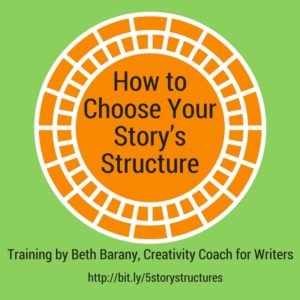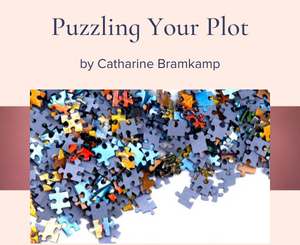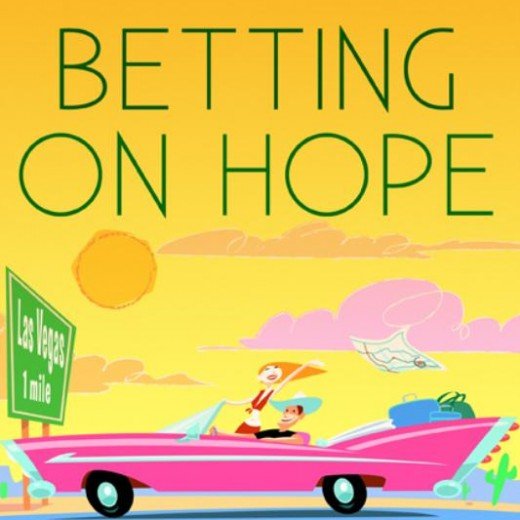The Right Story Structure Can Spark Your Creativity
 One of the most common questions I get from fiction writers is, “Where do I begin?”
One of the most common questions I get from fiction writers is, “Where do I begin?”
The writer is overwhelmed, feeling lost, and maybe very frustrated.
They have a story in them, but nowhere to put it.
Coupled with this overwhelm is the confusion about all the ways to write stories — story maps and structures galore.
Which brings them back to: “Where do I begin?”
I too had this confusion and overwhelm until I figured out — through lots of writing different kinds of ways and different kinds of stories — that every story has an inherent structure.
Since I’m an intuitive writer, I had thought story should just come to me, but I had to learn the tools of the trade to finally grok structure.
In a live training this week, Wednesday, March 22, 5:30-7pm Pacific, I’ll present 5 of those structures that helped me understand the core of story telling.
I’ll share how I use them to craft compelling fiction and I’ll help you determine which story structure will be a good fit for you and your story.
Co-presenting by my friend and writing coach colleague, Lynn Johnston, we’re honored to present to you:
How to Choose Your Story’s Structure
In this training, you’ll learn the ins and outs of five storytelling structures that have stood the test of time because of their ability to move readers:
- Three-Act Structure
- The Hero’s Journey
- The Virgin Archetypal Journey
- The Five-Point Structure
- The Five Commandments of Storytelling
You’ll also learn:
- How each of these structures highlight different aspect of story
- The relationships between these five structures—how they overlap and how they diverge
- How the obligatory scenes of different genres fit into these structures
If you can’t make the live training, you’ll get a replay in video and audio.
And as always, you can ask us follow-up questions in email if you need help applying the concepts to your story.
You’ll also get:
- A transcript of the training
- A PDF containing the slides
- Cheatsheets and worksheets for each of the structures
- Bonus course: 7 Keys to Story Planning (free)
If you’d like to deepen your understanding of these five powerhouse story structures, you can find out more (and sign up) here:
For Plotters and Pantsers
If you’re a plotter, this training will give you a new perspective on storytelling structure—a look at the big picture that will make plotting easier, no matter what structure you choose for each story.
If you’re a pantser, this is your chance to learn about story structure from someone who thinks like you do. 🙂
Here’s to you and your creativity!
Have a great week!
All my best,
Beth
FAQ
Here’s some questions Lynn and I have been getting.
Q: Why am I teaching five story structures at once, rather than just focusing on one?
A: What’s the easiest way to learn something new?
By starting with what you already know and building on it.
You can google a new story structure and memorize the steps from scratch if you want.
But you’ll understand it—and be able to use it—much more quickly if you compare it to a structure you already know, and look for similarities and differences.
If you identify the relationships between the structure you’re familiar with and the one that’s new.
I’m going to illuminate the relationships between five different story structures—once you see how they’re related, you can master all five of them more easily.
Q: I’m already writing stories with the Hero’s Journey. Why do I need to learn any other storytelling structure?
A: If you love the Hero’s Journey and it works for you 100% of the time, maybe you’re fine.
But…have you ever heard the saying, “If all you have is a hammer, everything looks like a nail?”
Different storytelling structures support different types of stories.
If the structure you’ve chosen to plot your story around doesn’t support the kind of story you want to tell…writing gets much harder.
You have to start tweaking the structure. Or deviating from it. Or maybe you give up on the structure altogether and try to wing it.
Unless you have one more than one tool in your toolbox.
When you’re comfortable with more than one structure, you’re more likely to start with the best one for the story you want to tell.
And if you get stuck, you can often get unstuck by looking at your draft through the lens of a different structure than the one you started with.
Q: I won’t be able to attend the live training. What if I have questions when I watch the replay?
A: No problem. You’re going to get the recorded replay, along with a transcript, cheat sheets, worksheets, and a PDF of the slides that you can print out for easy reference.
If you still have questions that aren’t answered by these materials, you can always email me to discuss the concepts with me in more detail.
Q: I accidentally deleted the last email you sent on my phone. How do I register?
A: Here’s where you can get more information (and sign up):






